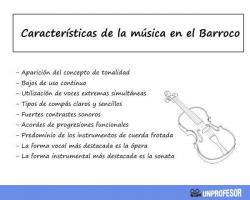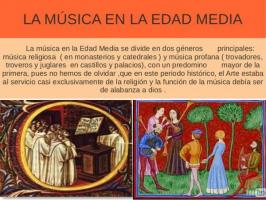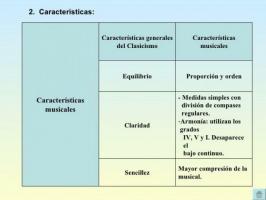All STAGES OF MUSIC: from Prehistory to the Present
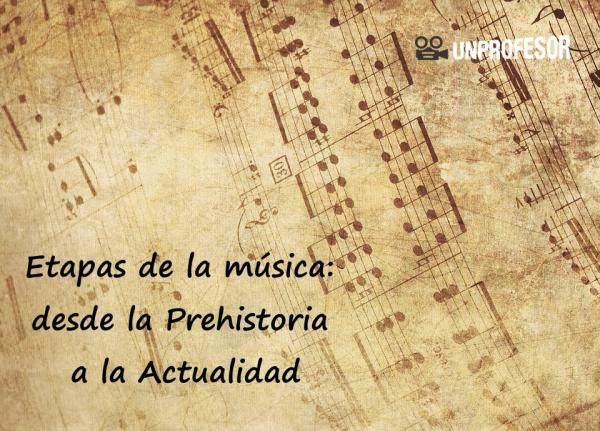
The time in which we live is responsible for our vision of the world. The ideas that surround us are an important part of the way we lead our day-to-day lives and the way we do things. Throughout the history of humanity, people have had different motivations to create, however everything goes back to curiosity and the need to express themselves.
Music has been a discipline that has accompanied humanity since always, because it comes from the principle of playing with sound. This is how from such a basic principle we have managed to evolve into an art that we enjoy daily in a large number of different ways. In this lesson of a teacher we will talk about the music stages through history and how it has evolved over time.
The most important music of this time was the Gregorian singing, which is a song of liturgical character. Gregorian chant had texts in Latin and was initially monodic in character (a single melodic line). It is from these songs that the first musical writing system, with musical notes and four lines to write them (unlike the current one used: the 5-line staff).
Apart from Gregorian chant, songs were created by the so-called "Menestrelli" who were minstrels and troubadours, traveling artists or entertainers for parties and banquets in the courts. The works performed were by lyrical and narrative character.
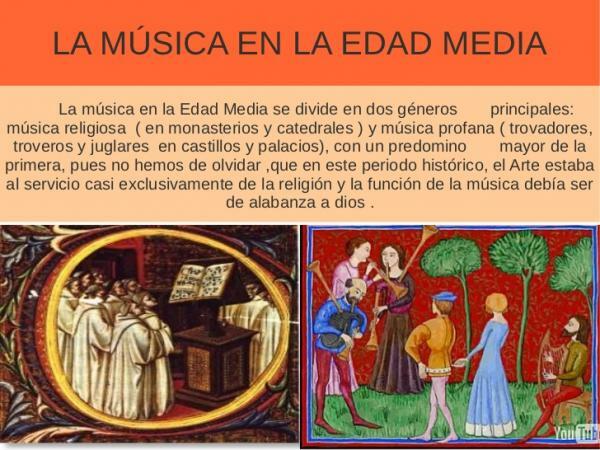
Image: Slideshare
Another of the most outstanding stages of music is the one that took place during the Renaissance. Here, the music begins to take on more complexity with the polyphony and counterpoint, that is, more melodic lines begin to be involved to play with the sound from the independence of the voices, the tensions and resolutions in relation to their intervals.
There is still a differentiation between religious musical forms (mass and motet) and popular or profane ones such as the madrigals and carols. He also accompanied dances with instrumental music, in forms such as the ricercare and the canzona.

Image: Pinterest
Since this period was definitive for the establishment of the forms and structures of music, we call the music of this period classical music, having its approximate end in the music considered today, in the year 1910.
Baroque Music (1600 - 1750)
It is developed mainly thanks to the opera, which took place in theaters accompanied by groups of instruments and from which the use and bases of the instrumental language developmentof the symphony orchestra, which at this time had rubbed strings as the predominant resource.
The Baroque era is characterized by an appreciation of workmanship, extremes, and contrast. Musically speaking, the use of the concept of "tonality" appears and the continuous use of the bass. Clear and simple beat rhythms, simultaneous extreme voices, functional chord progressions, and spaces for improvisation are used. At this time the musical forms of the opera, oratorio, cantata, concert, sonata and suite among other.
Some of the notable musicians of this stage were: Johan Sebastian Bach, Georg Fredrich Händel, Antonio Vivaldi, Georg Phillip Telemann and Claudio Moteverdi.
Classicism (1750 - 1800)
Classicism has a Vienna as the most powerful broadcasting center, followed by Paris, Berlin and Mannheim. The music of classicism is characterized by its transparency, clarity, symmetry and solidity in tonality. In contrast to the earlier Baroque era, classicism sought naturalness and rejected excesses. It is at this time that the classic models par excellence of forms such as the symphony and the sonata are established..
Previously music was an art managed mainly by the aristocracy, but at this time, it happens to be disseminated mainly by the public of the bourgeoisie, increasing the reach of music to the general public and in a international. Within the relevant musicians from this time we have Wolfgang Amadeus Mozart, Franz Joseph Haydn, Antonio Salieri, Luigi Boccherini and Níccolo Paganini.
Romanticism (1800 - 1860)
The Musical romanticism It is another of the clear stages of music. In contrast to previous currents, romanticism seeks the Sentimental individual expression, interpretation of life and nature. The utmost importance is given to the proposal of personal ideas and the freedom of creation. The exotic was great cause for appreciation.
Musically there is a greater use of cboth harmonics, chromaticisms, minor keys, widening of range and musical variety. There is a lot of use of ambiguous colors and modulations. The size of the orchestra grew notably in quantity and in inclusion of instruments. Virtuosity and improvisation were also more appreciated.
Some important musicians of the time: Ludwig Van Beethoven, Friedric Chopin, Franz Liszt, Richard Wagner, Johannes Brahms, Robert Schuman, Gustav Malher, Giuseppe Verdi, Franz Schubert, Pyotr Ilyich Tchaikovsky, Sergei Rachmaninoff.
Impressionism (1860 - 1910)
It has its origin predominantly in France, with the musicians Claude Debussy and Déodant de Séverac. Some argue that impressionism is not exactly a musical genre but an extension of ideology.
In any case, musical impressionism is characterized by the total freedom of harmonic and rhythmic creativity, which are established at the beginning but manipulated during the work, the use of scales (modes) that had fallen into disuse during the Baroque, where only the major and less. A lot is played with insinuation and subtlety, the time is freer and / or rubato and above all, it is experimented with the timbre.
Debussy is known as the maximum representative of Impressionism, but composers such as Maurice Ravel and Erik Satie, Manuel de Falla, Isaac Albéniz and the precursors of the movement: Gabriel Fauré and Camille Saint-Saëns.

Image: Pinterest
And to end this tour through the stages of music, now we will focus on the present. Modern music is sometimes difficult to define thanks to its wide range of possibilities. The period is characterized by total freedom and the use of both classical and structural elements as well as forms of experimentation regarding the breakdown of tonality, shapes, techniques and colors. One of the most important concepts of this time is twelve-tone, which is music that uses the 12 notes of the chromatic scale with total freedom, that is to say in an atonal way (there is no tonality established).
There is a crucial phenomenon at this time: the emergence of electronic technology. Thanks to her the possibility of record the sound, which would give rise to the music industry and that would revolutionize the way of listening and distributing musical works. If at first music could only be heard live, now it could be heard in the comfort of home, with the album of (followed later by cassettes, CDs and digital music) which then gives rise to the birth of the music industry. There are also possibilities of merging with other mass media such as the cinema and radio.
These phenomena would give rise to what we call "popular music" and with it, hundreds of genres and musical styles such as rock, pop, funk, folk, jazz, reggae, bossa nova, salsa, electronic, etc. Today music continues to grow and revolutionize with technology and advances in computing, changing the way we listen, create and share music.
Knowing about history helps us understand the rationale for many things in life. present, and that understanding allows us to enjoy the genius of the things that we sometimes give for granted. Music is a vast and fascinating world that has changed over the centuries and that we continue to have the pleasure of having and enjoying.

